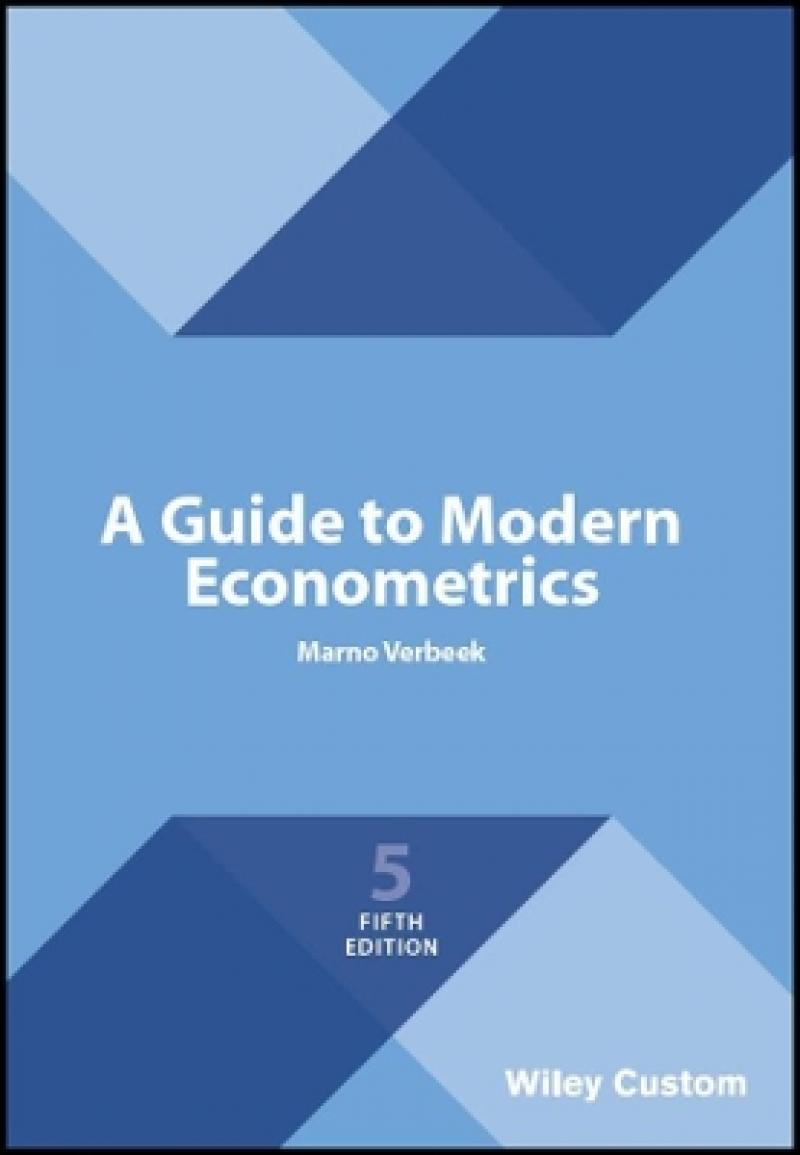Preface
1 Introduction
1.1 About Econometrics
1.2 The Structure of This Book
1.3 Illustrations and Exercises
2 An Introduction to Linear Regression
2.1 Ordinary Least Squares as an Algebraic Tool
2.2 The Linear Regression Model
2.3 Small Sample Properties of the OLS Estimator
2.4 Goodness-of-fit
2.5 Hypothesis Testing
2.6 Asymptotic Properties of the OLS Estimator
2.7 Illustration: The Capital Asset Pricing Model
2.8 Multicollinearity
2.9 Missing Data, Outliers and Influential Observations
2.10 Prediction
Wrap-up
Exercises
3 Interpreting and Comparing Regression Models
3.1 Interpreting the Linear Model
3.2 Selecting the Set of Regressors
3.3 Misspecifying the Functional Form
3.4 Illustration: Explaining House Prices
3.5 Illustration: Predicting Stock Index Returns
3.6 Illustration: Explaining Individual Wages
Wrap-up
Exercises
4 Heteroskedasticity and Autocorrelation
4.1 Consequences for the OLS Estimator
4.2 Deriving an Alternative Estimator
4.3 Heteroskedasticity
4.4 Testing for Heteroskedasticity
4.5 Illustration: Explaining Labour Demand
4.6 Autocorrelation
4.7 Testing for First-order Autocorrelation
4.8 Illustration: The Demand for Ice Cream
4.9 Alternative Autocorrelation Patterns
4.10 What to do When you Find Autocorrelation?
4.11 Illustration: Risk Premia in Foreign Exchange Markets
Wrap-up
Exercises
5 Endogenous Regressors, Instrumental Variables and GMM
5.1 A Review of the Properties of the OLS Estimator
5.2 Cases Where the OLS Estimator Cannot be Saved
5.3 The Instrumental Variables Estimator
5.4 Illustration: Estimating the Returns to Schooling
5.5 Alternative Approaches to Estimate Causal Effects
5.6 The Generalized Instrumental Variables Estimator
5.7 Institutions and Economic Development
5.8 The Generalized Method of Moments
5.9 Illustration: Estimating Intertemporal Asset Pricing Models
Wrap-up
Exercises
6 Maximum Likelihood Estimation and Specification Tests
6.1 An Introduction to Maximum Likelihood
6.2 Specification Tests
6.3 Tests in the Normal Linear Regression Model
6.4 Quasi-maximum Likelihood and Moment Conditions Tests
Wrap-up
Exercises
7 Models with Limited Dependent Variables
7.1 Binary Choice Models
7.2 Multiresponse Models
7.3 Models for Count Data
7.4 Tobit Models
7.5 Extensions of Tobit Models
7.6 Sample Selection Bias
7.7 Estimating Treatment Effects
7.7.1 Regression-based Estimators
7.8 Duration Models
Wrap-up
Exercises
8 Univariate Time Series Models
8.1 Introduction
8.2 General ARMA Processes
8.3 Stationarity and Unit Roots
8.4 Testing for Unit Roots
8.5 Illustration: Long-run Purchasing Power Parity (Part 1)
8.6 Estimation of ARMA Models
8.7 Choosing a Model
8.8 Illustration: The Persistence of Inflation
8.9 Forecasting with ARMA Models
8.10 Illustration: The Expectations Theory of the Term Structure
8.11 Autoregressive Conditional Heteroskedasticity
8.12 What about Multivariate Models?
Wrap-up
Exercises
9 Multivariate Time Series Models
9.1 Dynamic Models with Stationary Variables
9.2 Models with Nonstationary Variables
9.3 Illustration: Long-run Purchasing Power Parity (Part 2)
9.4 Vector Autoregressive Models
9.5 Cointegration: the Multivariate Case
9.6 Illustration: Money Demand and Inflation
Wrap-up
Exercises
10 Models Based on Panel Data
10.1 Introduction to Panel Data Modelling
10.2 The Static Linear Model
10.3 Illustration: Explaining Individual Wages
10.4 Dynamic Linear Models
10.5 Illustration: Explaining Capital Structure
10.6 Panel Time Series
10.7 Models with Limited Dependent Variables
10.8 Incomplete Panels and Selection Bias
10.9 Pseudo Panels and Repeated Cross-sections
Wrap-up
A Vectors and Matrices
A.1 Terminology
A.2 Matrix Manipulations
A.3 Properties of Matrices and Vectors
A.4 Inverse Matrices
A.5 Idempotent Matrices
A.6 Eigenvalues and Eigenvectors
A.7 Differentiation
A.8 Some Least Squares Manipulations
B Statistical and Distribution Theory
B.1 Discrete Random Variables
B.2 Continuous Random Variables
B.3 Expectations and Moments
B.4 Multivariate Distributions
B.5 Conditional Distributions
B.6 The Normal Distribution
B.7 Related Distributions
Bibliograph
Index
A Guide to Modern Econometrics has become established as a highly successful textbook. It serves as a guide to alternative techniques in econometrics with an emphasis on intuition and the practical implementation of these approaches.
This fifth edition features:
- Clear and intuitive exposition, with a focus on implementation and practical relevance.
- Concise and attractive presentation, providing a useful guide to more specialized literature.
- More than 25 detailed empirical illustrations, each covering 2 to 9 pages, taken from a wide variety of fields.
- Coverage of a wide range of topics, including time series analysis, limited dependent variable models, panel data analysis and causal inference.
- Supplementary material, including PowerPoint slides for lectures, data sets of the empirical illustrations and exercises, and solutions to selected exercise, available through the book's website www.wiley.com/college/verbeek
